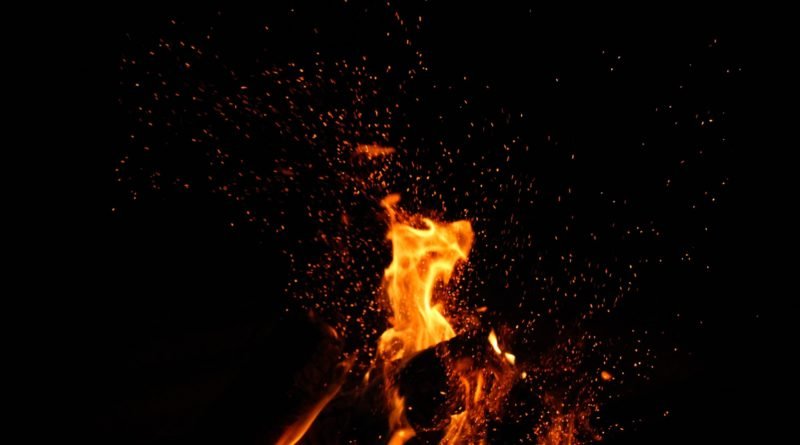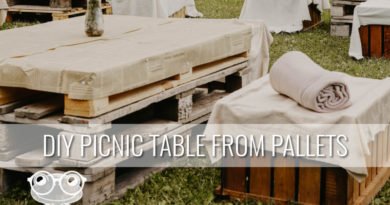Last modified on September 21st, 2020 at 11:50 am
Propane Fire Pits for Camping & The Outdoors
Introduction:
Propane fire pits are increasingly becoming more popular in recent years as they are generally safer compared to open fires, and are easy to use and quick to setup.
Open fires usually take a while to get going, and in urban environments you’d have to worry about the smoke/sparks, and your neighbors. Propane fire pits are perfect for home use, and are also suited for camping and the outdoors.
Their purpose is to create a controlled fire without the need for logs and other fire-starting equipment which can become quite expensive. For example, if you are purchasing firewood from stores, you could expect to pay $10-20 for a few logs in most places. This adds up!
How Do They Work?
Propane fire pits are equipped with a burner, hose and a propane tank. Most units have an easy on switch and other useful knobs which allow you to control the heat.
When it’s time to go to sleep and extinguish your fire, simply turn the knob into the off position. You don’t need to throw water on the fire or wait for it to die down. Better yet, your clothes won’t smell of burned wood or smoke.
Are They Worth It?
Propane models take a lot less work to enjoy a crackling fire on your patio or out in the woods compared to traditional wood burning options. They can also be used during a fire ban as the fire that they omit is controlled, unlike wood burning campfires which may sprawl out of control if you don’t know what you’re doing. Nearly 85% of wildfires in the US are actually caused by humans, according to the USDA.
Over the long run, if you are purchasing the wood, propane fire pits end up being much cheaper compared to open fires. However, creating your own wood-burning fire can be a great experience.
Some models also support patio use due to the insulted bottom and can be moved and carried around with ease. It makes for a nice touch during an evening in the backyard, or if you’re throwing a party. No hassle, no mess, and total control over your fire.
Fire pits are not specifically designed for cooking, but some do allow for roasting and come with a cooktop. Be sure to clean them before you cook your food as the debris and particles could affect the taste.
How to Choose a Propane Fire Pit?
Here are a few tips to help you choose the best propane fire pits.
Weight & Size. Consider where you will be using the unit and how much space you can afford to lose. For strictly home use, size wouldn’t be much of an issue, but if you are frequently taking your unit camping, be sure to check the portability and weight of the unit. Most propane fire pits weigh around $5-10kg, so you should be fine carrying it to your campsite.
Style. Many fire pits on the market look amazing, with some being made from durable stainless steel, or finished with black powder coating for a rustic design. Furthermore, lava rocks or fake logs are great for a final touch and can enhance the flickering effect. Some units sell these separately, while others have them included.
Safety Features. Be sure to always check for safety features such as on/off switches, regulators for the propane tank, a long hose and anti-heat material so that you don’t burn your hands if you want to move it.
Extras. Some units include a lot of noteworthy extras such as zipper bags, carry handles, a lid and extra lava rocks! Cheaper units tend not to include many extras, and you will find that you may have to purchase the lava rocks separately in some cases.
Power. To properly heat up the area, you should be looking at an average of around 40,000 BTUs. You can go lower, but it will probably have trouble making the area warm enough during winter months.
Where Can You Use Your Propane Fire Pit?
Some fire pits can be built into your patio, while others are portable. The portable models are great for the outdoors, such as camping or even in your backyard.
You can generally use your unit during fire bans but it’s always best to check with your local laws if you want to use them in national parks or forests as they are often regulated.
When using your unit at home, do not use it indoors as the fumes are toxic to humans. Make sure that the area is well ventilated like a porch/patio or on short cut grass in your backyard. If your grass is too long, it may cause it to burn.
For concrete/brick floors, you should be fine with propane burning pits as they can’t generate enough heat to crack or burn the concrete compared to open fires.
Conclusion:
Propane fire pits are a great alternative to traditional wood fires and are easy to use and maintain. Cook some marshmallows, snuggle up, and be sure to turn off your unit before you go to sleep!




